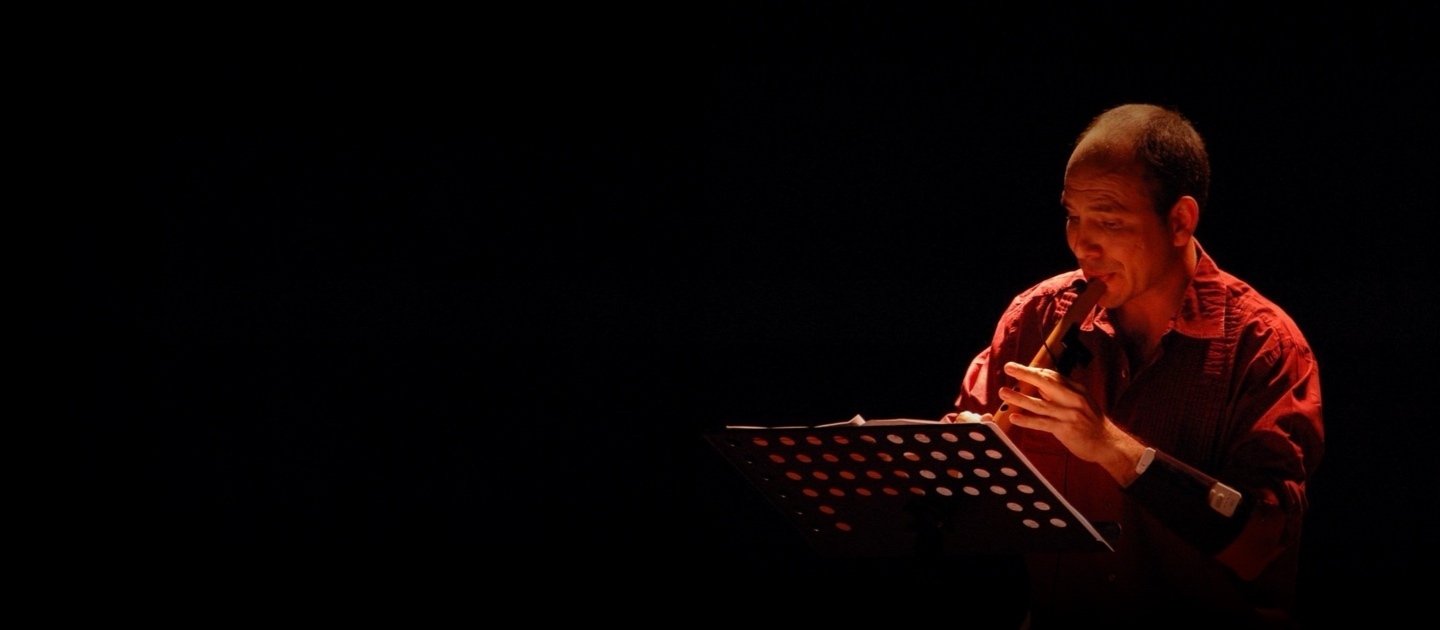
Patricio de la Cuadra and the sound of digital magic flutes
The musician, engineer, researcher, and professor at the Faculties of Arts and Engineering developed a physical model that is unique in the world: a digital technology that replicates the sounds of different flute-like instruments. Its invention can also be used to make music with sounds that have not yet been discovered.
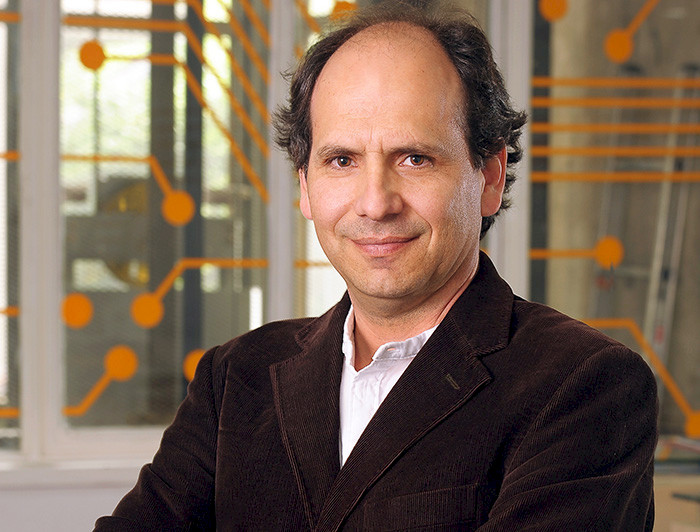
photo_camera Musician and engineer Patricio de la Cuadra developed a physical model of flute-type instruments. It's a technology that digitally replicates the sounds of different musical instruments, such as the quena, the transverse flute, or panpipes. (Photo by: Institute of Music) (Alt: Professor Patricio de la Cuadra)
During his undergraduate studies in the 1990s, Patricio de la Cuadra majored in electrical engineering and transverse flute as separate disciplines.
While they were not necessarily opposing, they did not pair in research laboratories or concert halls formally.
However, after obtaining a dual degree at UC Chile, he completed a Master's Degree in Electrical Engineering and another in Music, Science, and Technology, at Stanford University, where he graduated in 2000.
"Since then, I have always maintained a kind of relationship between music and engineering," said de la Cuadra. He has been playing flute since he was 12 and was a member of the national band Barroco Andino as a quena (pre-Colombian flute) and palahuito (cane flute) player.
He played concerts between 1987 and 2011 and performed at Carnegie Hall (United States) and Osaka Symphony Hall (Japan), among other venues, with the band.
However, Patricio's interest in flutes went beyond performing baroque music with traditional instruments from the Andes on the world's most important venues. There was something about the physics of the musical instruments that filled him with questions.
So the musician, who achieved a national score in the mathematics test to enter UC Chile, continued his search to find bridges between both disciplines. He decided to pursue a Ph.D. in Computer-Based Music Theory and Acoustics at Stanford University (with a minor in Electrical Engineering), which he completed in 2005.
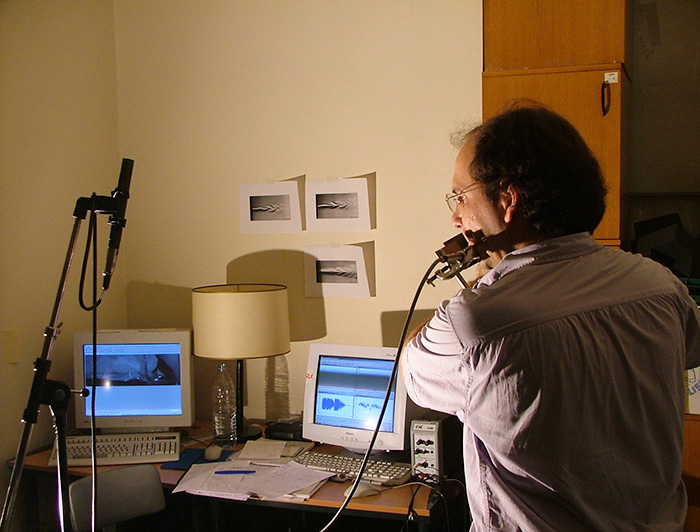
Engineering and music
"Unlike what happens with reeds or strings, in the world of flutes, we are dealing with invisible objects all the time," said De la Cuadra. He is referring to one of the essential elements of this discipline: blowing.
"The clarinet reed can be seen vibrating, and from the bow of the violin, one can take images and get into the micro-world of what is happening.
But in the case of the flute, it's all magic: you blow into it and get a sound," he added.
To see and measure the mystery happening inside flutes, the researcher moved from Stanford to the French Institut de Recherche et Coordination Acoustique Musique (IRCAM), the music laboratory founded in 1977 by composer Pierre Boulez.
There, at the leading music research lab in electroacoustics, Patricio developed a physical model of flute-like instruments as part of his doctoral thesis.
This technology makes it possible to digitally replicate the sounds of different instruments: the quena, the flute, the panpipes, the Chinese flute, and the pre-Hispanic Antara. But in addition to experimentation, this technology allows making music from non-existent instruments.
It took a process of many trials, errors, and hundreds of graphs, tables, and curves that linked musical notes, figures of mechanical devices, and blowing velocities to achieve this.
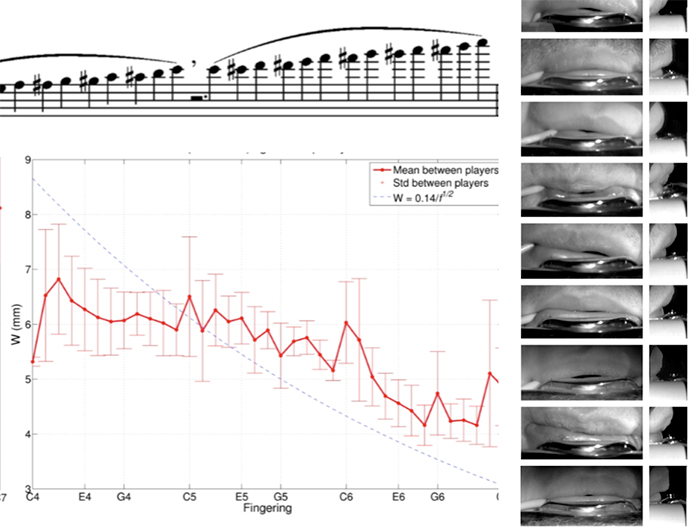
Seeing the invisible
"I did what experimental physics generally do, that is: observe, measure, and predict," explained De la Cuadra about his laboratory research. But he clarified that in this case, "it was not that simple because I had to observe a blow."
To visualize the invisible, he tried an optical system developed in the 17th century, called Schlieren, from which black and white images are obtained.
De la Cuadra explains the testing process:
"I took a stream of air and added a little bit of CO2 to it so that the mass was slightly different than the mass of the air and put it into the Schlieren system. One might think it's pretty rudimentary, but it's a nifty optical system and one that needs quantum mechanics to explain what's going on inside it.
You convert that mass difference, also called the mass gradient, into a difference in the intensity of the image. Then in the pictures, you see the edges of the air jet half-black or half-white, depending on the direction of the gradient."
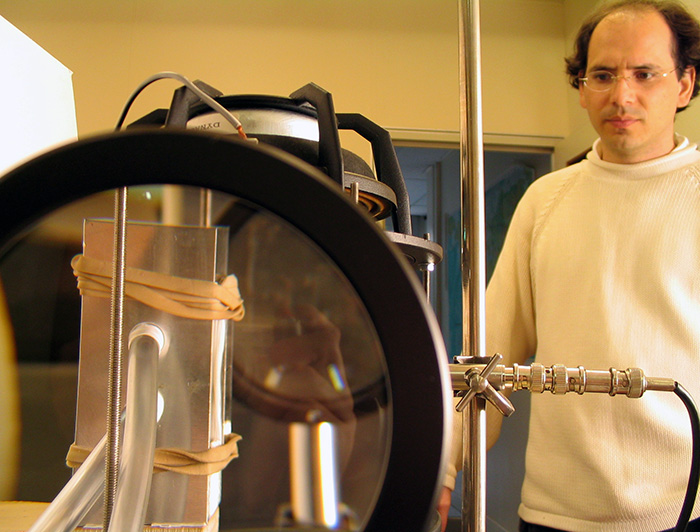
Once he was able to see the blowing, he went a step further to understand and replicate the functioning of flutes.
The next step was to understand the materials of the instruments, their shapes, and particular designs. Everything can influence the sound, from the number of holes to the porosity of their resonators.
"All of that somehow impacts the timbre the instrument produces, its pitch, and the possibility of making it sound louder or slower," said the musician and engineer.
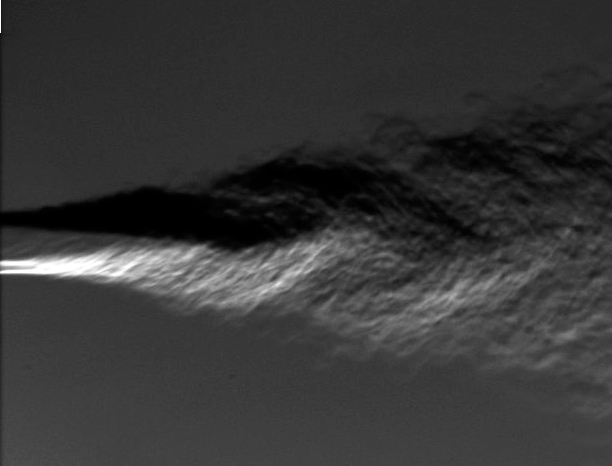
In these analyses, Patricio saw the blowing was disturbed when it entered the instrument. That disturbance propagated, first into the air jet, then into the flute tube.
"We have been able to measure the speed at which this disturbance propagates, as well as the amplification it undergoes as it passes through this air jet. These values are not constant but depend on the note being played."
They conducted experiments with imaging, analysis, mathematical calculations, and curve fitting to determine this.
"We tried to be very scrupulous from a scientific point of view," explained De la Cuadra on creating the model. Later he transferred the mathematical description —a set of equations— of the flutes functioning to a digital version on a computer.
"From there, you can make sounds from those equations. So indirectly or metaphorically, you're playing the flute," reflected.
Testing: one, two, three
At the beginning of this musical experimentation journey, a beta version of the model made it possible to simulate some flutes from the north of Cameroon, from a group called Ouldémés.
"We invited some flute players to Paris to play some devices that we developed especially for them. They were similar to their flutes and allowed us to measure their musical gestures to pilot the physical model that recreated the sound of their instruments. It was an enjoyable interdisciplinary project.
The first interaction between the system I had created and the performers on stage was a challenge. We worked with ethnomusicologists who were seeking to understand the behavior of these musical groups. At the same time, I tried to measure in a non-intrusive and sufficiently accurate way what they were looking for," he recalled.
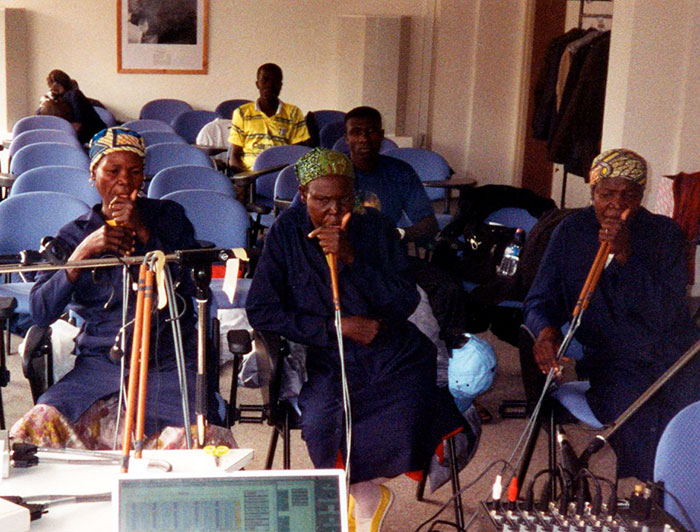
Then, Patricio uploaded the finished version of the physical model of flute-type instruments to Forum: IRCAM's platform, where research conducted within the institution is sold.
"I remember they did a couple of fascinating works with the model. Like a rock opera in which they used flute sounds and an installation made by Chris Chafe at the San Jose Museum in California," he said.
Mixed music and the impossible flutes
The engineer liked the idea that his physical model is used for a variety of disciplines. He finally presented it in 2005, and, to date, it is the one that most faithfully reproduces the functioning of flute-like instruments in the world.
But the musician was missing something else: musical experimentation.
Patricio wanted composers to learn the computer commands with the model and make music.
"There is a beautiful exercise in the scientific and mathematical analysis of a musical problem, which then closes the cycle by making music again," he said.
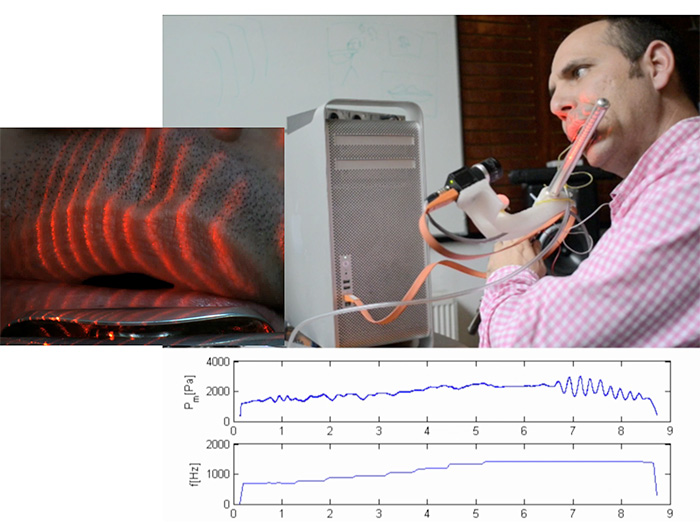
With that goal in mind, he approached some composers and said: "I would love for us to make music for real and virtual flutes."
He presented them with the range of instruments he could play, such as quenas, zampoñas, and transverse flutes of different periods and heights.
The engineer set an only requirement: in addition to making music for these instruments, they had to be accompanied by a computer playing his model of flutes.
However, the musician kept certain information from the composers so they could experiment on their own.
"When the model falls into the creative hands of a composer, they modify and alter the parameters to generate a palette of fascinating sounds. You can start with a sound similar to a traditional flute and extend its possibilities to sounds that real flutes cannot play.
For example, you can decide that the synthesized flute should have, let's say, 200 holes or 2,000 if you want! And with a jet of air of 7 meters per second, which is more or less how recorders are blown. Or to 0.3 or 300 meters per second, which is something that the lungs are not able to control," he said about the creative freedom offered by this device. It's like a sound laboratory.
In this video, he explains the model: (for English, please activate the subtitles)
Teaching and performing at UC Chile
Once established at UC Chile, Patricio De la Cuadra applied to the Office of the Vice President for Research (VRI, Spanish acronym) funds to perform a mixed music concert.
He won the Artistic Creation Fund and began to work with the composers and professors of the Institute of Music:Marcelo Espíndola, Tomás Koljatic, and Antonio Carvallo.
"We organized a work structure where during the first months I explained what a physical model was and what the physical model of the flutes specifically consisted of (watch YouTube video below). Then each one would create sounds from the model and make their compositions," he explained.
Today "we have half a concert ready to play live when the pandemic allows us to do so," promised Patricio. There are 30 minutes of music already created, tested, and saved on a computer. And Patricio is ready with a set of flutes he might need to get on stage.
De la Cuadra currently teaches the following courses:
- Introduction to Music, Science, and Technology (Institute of Music),
- Computer Listening and Digital Signal Processing (Faculty of Engineering).
- Music and Science (postgraduates Studies in Arts).
On the experience of teaching in two such different faculties (Arts and Engineering), De la Cuadra reflected:
"I remember a math professor coming to the East Campus many years ago and saying he came to 'evangelize.'
It made me laugh. But now that I'm teaching courses that try to bring music and science together, I see myself the same way. I find myself getting the word of science and scientific applications to the Institute of Music. And also bringing the world of arts and music to the Faculty of Engineering."


